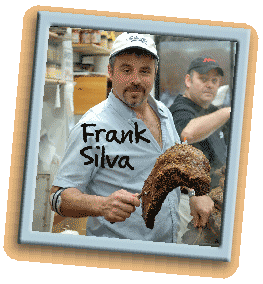
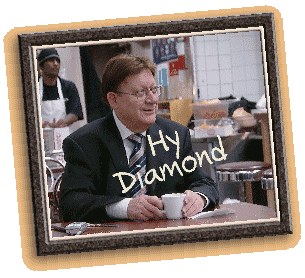

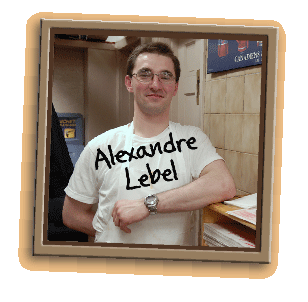
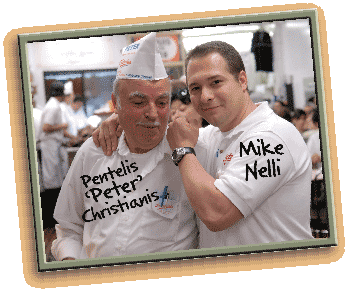

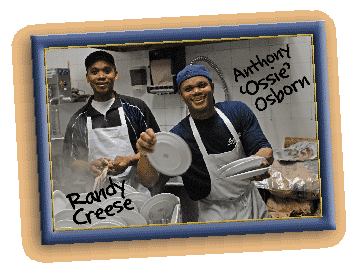
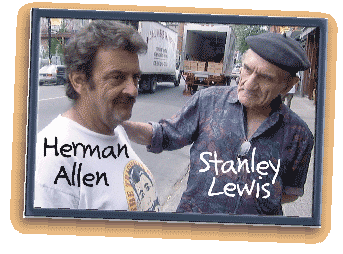
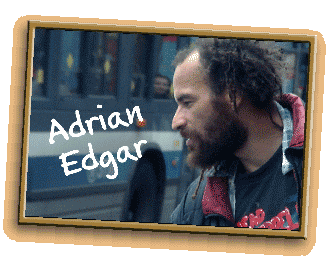

GETTING STARTED
The
idea came from the film’s co-producer Richard Elson, with whom Garry
Beitel had worked before on several earlier films including the acclaimed
Bonjour! Shalom! “When Richard proposed the idea of a documentary
on Schwartz’s it wasn’t immediately evident how to shoot a film
in such a cramped noisy environment. But Schwartz’s was a landmark
that I had grown up with and I was surprised that no one had yet made
a film about the place. The challenge of getting inside the Schwartz legend
appealed to me and my partner, Barry Lazar who is also a co-producer on
this film. For me, it was especially important to find an original approach
that would it make it clear that this was not a promotional film.”
For several months before shooting began, Garry went regularly to Schwartz’s just to observe. “I soon realized that I was drawn to the stories about the people who work at the deli – the meat cutters, the waiters, the busboys – many who had been there for over 20 years, some as long as 40 years. Talking to the staff at Schwartz’s I realized that their work wasn’t just a job. They felt they were part of a community and that working at Schwartz’s filled them with pride and gave them a sense of purpose which other restaurant workers rarely have. And this feeling of belonging also extended to the panhandlers who have been earning their livelihood outside the deli’s front entrance for years. It soon became clear that Schwartz’s Deli could become the backdrop for a series of interweaving stories that I would follow over a year of shooting.”
RESEARCHING
THE STORY
For
days at a time, Garry was a fixture at the counter watching and listening
to what was going on - during both the day and at night shifts. There
are close to 40 people who work at Schwartz’s – all men except
for some of the women cashiers. How to find the characters and the stories
that captured the dynamics of the place became the focus of Garry’s
early research. How did people move up the hierarchy from the kitchen
to busboy to the counter to the sought after jobs of waiter, cutter and
grill man? And who were the most compelling characters? Who would be camera
friendly, who would be intimidated? Little by little, he stepped inside
the universe of the people who work at the deli and the parallel world
of the panhandlers who also formed an integral part of the of the Schwartz
hierarchy.
In
the early stages it seemed important to place the 78 year old restaurant
in an historical context. But to our surprise, after an exhaustive search
of archival sources, we found very few useful photos or moving images.
“We made a decision that the story would take place in the present.
It would be a film about Schwartz’s, as it is now and the drama would
happen while we were filming.”
CREATING
THE STORY
“We
were a small crew, Marc Gadoury on camera, André Boisvert recording
sound, me directing and alternately Barry and Richard coordinating the
logistics. We found five or six key stations in the deli where we could
be as unobtrusive as possible. Because I had spent some time getting to
know people it didn’t take long for the crew to begin to blend in.
Our approach was to use an observational, cinema-verité style where
we would just wait for things to happen, for the stories to emerge. Sometimes
we would wait for hours with nothing of interest occurring. We’d
move from station to station trying to find a better angle, shooting endless,
often repetitive footage of sandwiches being prepared and eaten, tables
set and cleared. Then suddenly, someone would walk in, sit in front of
the camera and we’d capture this incredible moment. We’d be
pinching ourselves afterwards for our good fortune in being at the right
place, at the right time.”
“As
compelling as the verité moments were, I felt that I also needed
to go further. I decided to conduct in-depth interviews with the people
who were emerging as the main characters. I wanted to probe more deeply
into their backgrounds, their attachment to Schwartz’s. The only
time to do this was in quiet of the early mornings when there were no
customers. I also decided to record more spontaneous interviews, informally,
in the midst of the action. Combining the interviews with the verité
moments allows the characters and their stories to develop with a stronger
feeling of intimacy.”
THE
IMPORTANCE OF SOUND
Sound
recording played an unusually significant role during the filming often
guiding what and who would be filmed each day. “On a typical day
we would set up the camera and then just watch what was going on. We were
developing relationships with the staff. Not everyone felt equally comfortable
being filmed and that could change from day to day. So each time we came,
I would decide which characters to follow. André, our soundman
would then attach wireless mikes to the selected employees. It was fascinating
to watch how people changed when they realized that we could hear them
even as we zoomed in on their exchanges from a distance. It’s that
curious thing that happens in verité filming when people act themselves
while putting on a subtle performance for the camera.”
A YEAR OF SHOOTING
Shooting
over a year’s time meant that we could deepen our relationships and
watch stories develop over time. Several key characters emerged. We learn
about general manger Frank Silva’s devotion to the deli, and to the
staff; we also discover how his commitment and long hours come with a
personal cost as his chronic shoulder pain worsens. We watch as busboy
Alex Lebel creates original poetry in between table clearing and then
later as he struggles to prove himself as a newly appointed counterboy.
We hear waiter Mike Nelli talk about his reluctance to work at the hectic
deli, then observe his delight in being part of the magical atmosphere
of the place and conclude with his philosophical musings about probably
growing old at Schwartz’s. And then there’s Ryan Larkin, the
famed subject of the Oscar winning animation film, Ryan, who continues
to panhandle outside Schwartz’s even as his health takes an unexpected
turn.
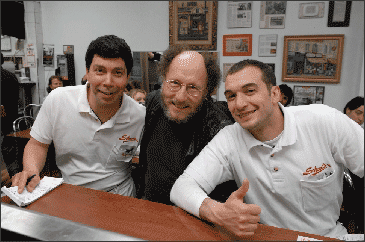
Filmmaker Garry Beitel (centre) became a fixture at Schwartz’s during his year and a half of researching, shooting and editing.